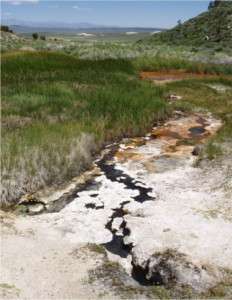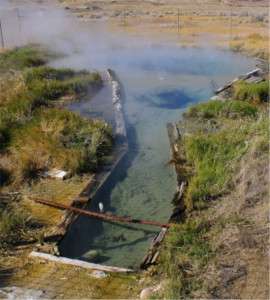Confirming microbial lineages through cultivation-independent means

The number of microbes found on Earth has been compared to the number of stars in the Milky Way. Yet the proportion of those microbes that can actually be grown under laboratory conditions is so small it would be akin to those stars that can be seen on a full-moon night in New York City—not many. To learn more about the uncultivated bacteria and archaea surrounding us, researchers are increasingly relying on culture-independent techniques such as single-cell genomics and metagenomics to fill in the still-unexplored branches on the Tree of Life. By carrying out such investigations, scientists hope not only to better understand the organization of microbial life on Earth but also to have more thorough surveys of potentially useful microbial genes, enzymes, pathways, and capabilities that could help DOE advance its energy and environmental missions.
In a recent study illuminating how novel microbial lineages are being uncovered through the use of such techniques, a team including researchers at the U.S. Department of Energy Joint Genome Institute (DOE JGI), a DOE Office of Science User Facility, offers compelling evidence that two groups of uncultivated bacteria actually belong to a single candidate phylum called 'Atribacteria.' These microorganisms are found globally distributed in "low energy" ecosystems where nutrients and oxygen are in short supply and shared metabolisms with other species—syntropy—is a viable survival strategy. The work was published online June 19, 2015 in The ISME Journal.
Shedding light on microbial dark matter lineages
"This paper is the first comprehensive look into the genomic diversity within the 'Atribacteria', a candidate bacterial phylum that's found in a wide variety of habitats such as geothermal springs, wastewater digesters and bioreactors, sub-seafloor environments, petroleum reservoirs, hypersaline microbial mats, and landfill leachates," said Brian Hedlund of the University of Nevada, Las Vegas and a DOE JGI collaborator. "The work was only possible with close collaboration at JGI, particularly Tanja Woyke, who coordinated the Microbial Dark Matter project and helped to bring together several CSPs with significant 'Atribacteria' data."

One candidate bacterial group (a phylum) called OP9 was first identified from samples collected at Yellowstone National Park's Obsidian Pool. Similar microbial diversity studies from a marine sediment yielded a candidate bacterial phylum called JS1. Samples of these microbes were also found in various locations around the world as part of the DOE JGI's efforts to shed light on what are considered "microbial dark matter," and generate reference genomes of uncultivated bacteria and archaea in order to discover novel genes that could have applications in the fields of energy and environment, as well as to learn more about microbial diversity. Early efforts in this field led to a DOE JGI publication that incorporated collaborators from around the work and multiple Community Science Program projects.
Building on this foundation, and on other succeeding studies, Hedlund's group proposed that the OP9 bacteria belonged to a candidate phylum to be called 'Atribacteria,' while JS1 was thought to belong to a sister candidate bacterial phylum. In this more recent paper, however, researchers combined analysis of 16S ribosomal RNA genes and other highly conserved genes (i.e. phylogenomics) and reported that, despite significant phylogenetic distance and broad habitat range, the OP9 and JS1 lineages share some common features and are closely related enough to be lumped into the phylum 'Atribacteria'.
First comprehensive genomic view of phylum
"There is not a compelling argument for designation of OP9 and JS1 as separate phyla, and the most parsimonious analysis of the available data would suggest that the 'Atribacteria', (inclusive of OP9 and JS1, is a single candidate phylum within the Bacteria," the team noted in their report.
Jeremy Dodsworth, a co-first author of the study who did his postdoctoral studies with the Hedlund lab and is now at California State University San Bernardino, noted that, "this current paper expands genomic coverage of the candidate phylum 'Atribacteria'… presents new single-cell genomic data and uses it, along with previously published single-cell genomes, to identify "Atribacteria" genomic fragments within metagenomic datasets."
Aside from providing the research community with a "first comprehensive view of this group of microbes and prediction of their shared structural and physiological traits," he added, "we also hope that it will give us clues as to how to grow members of the 'Atribacteria' in the laboratory and study them in isolation." Knowing "what genes are out there" offers considerable promise for better tools for both growing difficult-to-grow microbes, as well as bioproducts relevant to energy and environmental challenges faced by DOE.
Journal information: ISME Journal
Provided by DOE/Joint Genome Institute





















